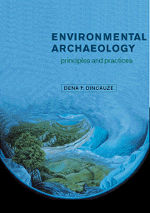Book contents
- Frontmatter
- Contents
- List of figures
- List of tables
- Preface
- Acknowledgments
- Glossary
- PART I INTRODUCTION
- PART II CHRONOLOGY
- PART III CLIMATE
- PART IV GEOMORPHOLOGY
- PART V SEDIMENTS AND SOILS
- PART VI VEGETATION
- PART VII FAUNA
- 15 FAUNAL PALEOENVIRONMENTS: CONCEPTS AND METHODS
- 16 FAUNAL PALEOECOLOGY
- 17 HUMANS AMONG ANIMALS
- Case Study: Howdowe read these bones? Seasons of use at Star Carr
- PART VIII INTEGRATION
- References
- Index
Case Study: Howdowe read these bones? Seasons of use at Star Carr
Published online by Cambridge University Press: 20 January 2010
- Frontmatter
- Contents
- List of figures
- List of tables
- Preface
- Acknowledgments
- Glossary
- PART I INTRODUCTION
- PART II CHRONOLOGY
- PART III CLIMATE
- PART IV GEOMORPHOLOGY
- PART V SEDIMENTS AND SOILS
- PART VI VEGETATION
- PART VII FAUNA
- 15 FAUNAL PALEOENVIRONMENTS: CONCEPTS AND METHODS
- 16 FAUNAL PALEOECOLOGY
- 17 HUMANS AMONG ANIMALS
- Case Study: Howdowe read these bones? Seasons of use at Star Carr
- PART VIII INTEGRATION
- References
- Index
Summary
The Star Carr site represents a turning point in prehistoric archaeology, especially in the paleoenvironmental archaeology of wet sites. Grahame Clark's monograph of 1954 established new standards for excavation, recovery, and interpretation. It has since inspired several reinterpretations. The site was reopened for additional field work in the 1980s and 1990s (Cloutman and Smith 1988; Mellars and Dark 1998). Such ongoing interest is a tribute to the quality of the original work and to the continuing importance of its role in archaeology.
Star Carr, a wetland site near the north edge of the Vale of Pickering in eastern Yorkshire, England, comprises a deposit of early Mesolithic artifacts of stone, bone, antler, bark, and wood, preserved with other organic remains in peat. It is culturally affiliated with the Danish Maglemosian, Mesolithic woodland hunter-gatherers who lived partly on terrain now inundated by the North Sea, during the early Holocene Preboreal period about 9600 radiocarbon years ago (see Day and Mellars 1994). Artifacts and organic debris were deposited on the shore and shallow margin of a lake occupying the Vale of Pickering.
The outstanding feature of the site was a “platform” of birch trunks and branches exposed by careful excavation of the overlying peat and mud. The platform lay on and in a reed swamp bordering the lake, between dry ground and open water where the latter was closest to land.
- Type
- Chapter
- Information
- Environmental ArchaeologyPrinciples and Practice, pp. 489 - 494Publisher: Cambridge University PressPrint publication year: 2000

